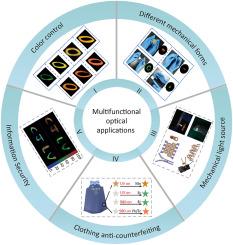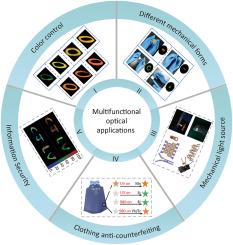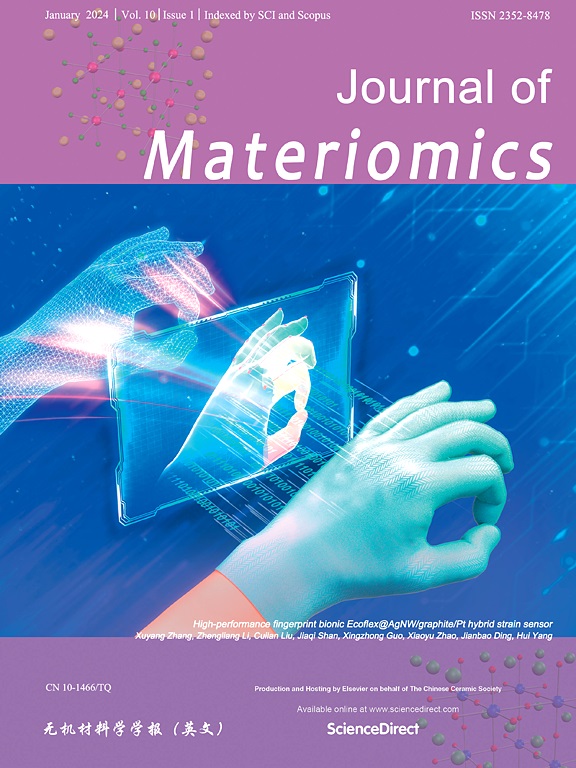压电半导体材料中用于应力和温度智能传感的三活性中心多模态发射
IF 9.6
1区 材料科学
Q1 CHEMISTRY, PHYSICAL
引用次数: 0
摘要
机械发光材料作为智能荧光粉具有重要的前景,在传感技术中有着广泛的应用。然而,创造能够响应各种外部刺激并在不同环境下展示多种功能的光子材料仍然是一个主要挑战。在本研究中,我们合成了掺杂三发光中心的压电半导体CaZnOS。该材料对各种刺激表现出多模态响应,包括紫外线和近红外光、机械应力和温度变化。值得注意的是,它对各种形式的机械应力表现出快速响应,响应时间在毫秒级,稳定性突出。通过调整发光离子的掺杂比例,实现了发光颜色的调制。此外,双模发射的集成促进了高灵敏度的温度传感,不依赖于外部光源。这些发现表明,我们的材料在智能感应应力和温度方面具有很大的应用前景。本文章由计算机程序翻译,如有差异,请以英文原文为准。


Multi-modal emissions from trinary active centers in piezoelectric semiconductor materials for intelligent sensing of stress and temperature
Mechanoluminescence materials have important promise as smart phosphors, offering wide-ranging applications in sensing technologies. Nevertheless, the creation of photonic materials capable of responding to various external stimuli and demonstrating multiple functionalities in different contexts remains a major challenge. In this research, we synthesized the doped piezoelectric semiconductor CaZnOS, incorporating trinary luminescent centers. This material exhibited multi-modal responses to diverse stimuli, including ultraviolet and near-infrared light, mechanical stress, and temperature variations. Notably, it demonstrated rapid responsiveness to various forms of mechanical stress, with a response time on the millisecond scale and outstanding stability. By adjusting the doping ratio of emitting ions, we achieved modulation of luminescent colors. Furthermore, the integration of dual-mode emission facilitated highly sensitive temperature sensing, independent of external light sources. These findings indicate that our material holds great promise for applications in intelligent sensing of stress and temperature.
求助全文
通过发布文献求助,成功后即可免费获取论文全文。
去求助
来源期刊

Journal of Materiomics
Materials Science-Metals and Alloys
CiteScore
14.30
自引率
6.40%
发文量
331
审稿时长
37 days
期刊介绍:
The Journal of Materiomics is a peer-reviewed open-access journal that aims to serve as a forum for the continuous dissemination of research within the field of materials science. It particularly emphasizes systematic studies on the relationships between composition, processing, structure, property, and performance of advanced materials. The journal is supported by the Chinese Ceramic Society and is indexed in SCIE and Scopus. It is commonly referred to as J Materiomics.
 求助内容:
求助内容: 应助结果提醒方式:
应助结果提醒方式:


